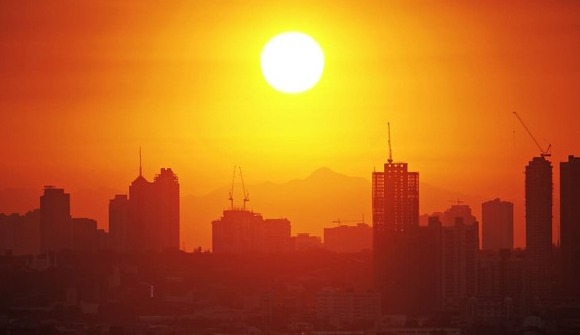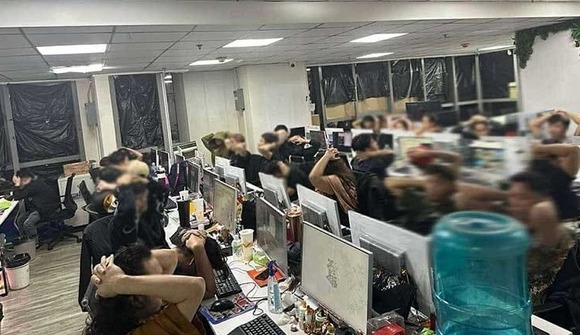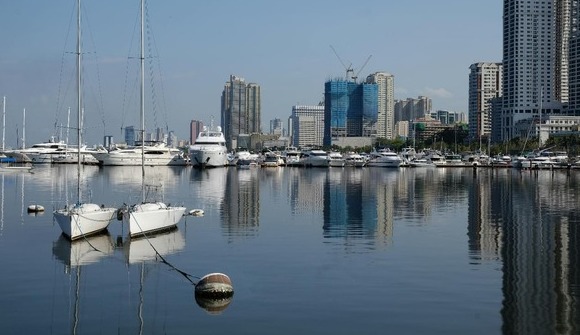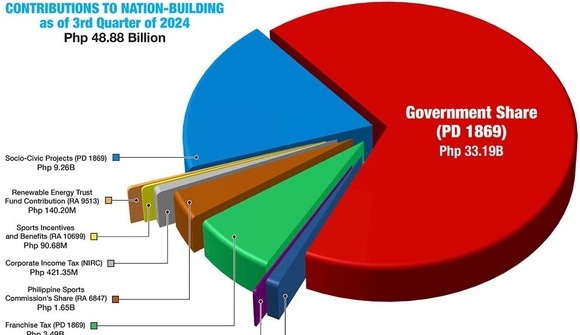
Metro Manila Office Vacancy Rate Hits 20-Year High Amid POGO Ban
Metro Manila’s office market is facing its highest vacancy rate in two decades, according to the latest report from commercial real estate services firm, Cushman & Wakefield. The firm’s MarketBeat report revealed that by the end of the third quarter of 2024, the average office vacancy rate in Metro Manila had surged to 18.2 percent. This marks the highest vacancy level since the second quarter of 2004, driven by a combination of factors including changes in corporate office space needs and the ongoing influx of new office developments into the market.
The vacancy spike comes as businesses adjust their office requirements, reducing space due to shifting work trends and economic pressures. In addition, the market saw the completion of approximately 114,000 square meters of office space in the third quarter, further increasing the overall supply and contributing to higher vacancy levels. Cushman & Wakefield noted that these new office spaces, combined with significant amounts of space being returned by major corporate tenants, have created an environment where vacant spaces are becoming more common.
The firm predicts that vacancy rates will remain elevated in the coming months, influenced by both local regulatory changes and broader economic shifts. A key factor in this forecast is the total ban on Philippine Offshore Gaming Operators (POGOs), which had previously occupied a significant portion of office space in Metro Manila.
The closure of these businesses has left a considerable number of office spaces unused.
READ: POGO Exodus Leads to Increased Vacancies in PH Office Spaces
Additionally, the recent amendments to the Corporate Recovery and Tax Incentives for Enterprises (CREATE) law, which promotes flexible work arrangements, are expected to contribute to the rising vacancy rate. As more companies adopt remote or hybrid work models, the demand for traditional office spaces may continue to diminish.
In terms of rental prices, Metro Manila’s office market is also experiencing downward pressure. The average asking rent for Prime and Grade A office spaces dropped slightly in the third quarter of 2024, marking the fourth consecutive quarter of rent declines. Asking rents for these office categories fell to P1,003 per square meter, down from P1,010 in the previous quarter and from P1,041 in the same quarter of the previous year. This downward trend in rents reflects the broader softness in the office market as vacancy rates climb and demand remains weak.
READ: PH Condo Vacancies Increase in 2024 3Q Due to POGO Ban
“The Metro Manila office market is exhibiting a slower-than-expected recovery in Q3 (third quarter) 2024,” Tetet Castro, director and head of tenant advisory group at Cushman & Wakefield, was quoted as saying in a report published by the Philippine Star.
She attributed this slowdown to the immediate effects of the POGO ban and the amendments to the CREATE law, which have contributed to elevated vacancy rates and declining rents. Castro added that while the office market is facing short-term challenges, there could be potential for a rebound if demand for office spaces stabilizes in the future.
The report also highlighted that the increase in vacancy rates has been most pronounced in mature office markets such as Pasay City, Makati City, and Taguig City. These areas, traditionally home to large corporate tenants, have seen notable shifts in occupancy. The high concentration of POGO operators in Pasay City has played a major role in increasing vacancy levels there, as the exit of these businesses left significant amounts of office space vacant. In Taguig and Makati, new office buildings with low pre-commitment levels have added to the oversupply, further pushing up vacancy rates.
Claro Cordero, Director and Head of Research, Consulting, and Advisory Services at Cushman & Wakefield, noted that the office vacancy trend is also being influenced by broader economic and geopolitical factors. For example, the U.S. presidential election could introduce uncertainty regarding policies that impact American firms’ outsourcing strategies, potentially reducing demand for office spaces used by business process outsourcing (BPO) companies.
Additionally, the rise of artificial intelligence (AI) in sectors like Information Technology and BPO could also limit demand for office space in the long term as automation reduces the need for traditional office setups.
Cordero stressed the importance of industry stakeholders adapting to these changes, particularly in the IT-BPM sector. He suggested that developing training programs to upskill workers and equip them with the necessary technical competencies could help sustain demand for office spaces in the future. He also pointed to the growing role of AI as a factor that may reshape the office market in the coming years.
Looking beyond the office market, Cushman & Wakefield’s report provided insights into other real estate sectors. In the residential market, the easing of monetary policies has yet to translate into a surge in demand for new housing projects. On the retail front, while a seasonal uptick in spending is expected to boost retail sales in the short term, the medium-term outlook remains cautious. Shifting consumer spending habits, particularly in response to lower living costs, are influencing retail trends. Retail spaces vacated by businesses catering to POGO workers, as well as those in malls yet to adapt to evolving customer preferences, are expected to add to the available stock.
However, the report was more optimistic about the industrial and hospitality sectors. According to Cordero, traditional tenants in the manufacturing industry are expected to continue driving demand for industrial spaces, and there is anticipated growth in the hotel sector as tourism demand rises in key destinations across the country.
Overall, while the office market in Metro Manila faces challenges, particularly in terms of high vacancy rates and falling rents, the broader real estate landscape remains diverse. The industrial and hotel sectors are poised for growth, and there is hope for a stabilization of the office market if businesses adapt to new working models and economic conditions.
Read related article: POGO Departures Could Cause Metro Manila Office Vacancy Rate to Hit 20.5% by Year-end
Other Interesting Articles
 Chinese Nationals Claim PNP Attempted to Extort P4 Million During Manila Raid Nov 6, 2024
Chinese Nationals Claim PNP Attempted to Extort P4 Million During Manila Raid Nov 6, 2024










